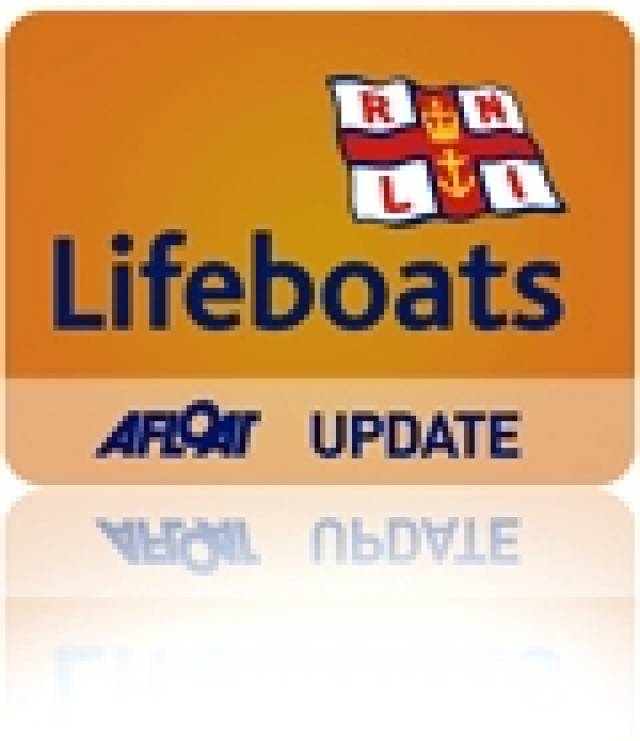#rnli – While out on exercise last night, Lough Derg RNLI Lifeboat came to the assistance of five people whose boat had suffered engine failure, at the south western end of Lough Derg.
At 8.30pm the Lifeboat observed a boat close to shore at Two Mile Gate, flash a distress signal with a torch. Upon investigation the lifeboat found five people, four adults and one child on board a 20ft boat that had suffered engine failure. They had contacted two friends for assistance, but having attempted to tow them, the battery on their jet ski failed.
The lifeboat crew, with Helm Eleanor Hooker, Robbie Garland and Owen Cavanagh on board, contacted Valencia Coast Guard to make them aware of the situation and to let them know that they were going to assist. The wind was a cold northerly wind, Force 2-3. Visibility was fair with failing light.
The lifeboat secured the jet ski and took the boat with her passengers and an RNLI crew member on board, under tow to their mooring at Killaloe. Once the boat was safely tied alongside, the lifeboat took the two jet skiers plus their vessel upriver and under the bridge at Killaloe to their launching slip, where they could recover their jet sk
The Lifeboat returned to Station and was ready for service again at 10.33pm.
Lifeboat Operations Manager, Liam Maloney advises all boat users to 'fully service your boats and engines before going afloat'. He added 'if in difficulty on the lake, called 999 or 112, or use Channel 16 on VHF and ask for marine rescue'.































































